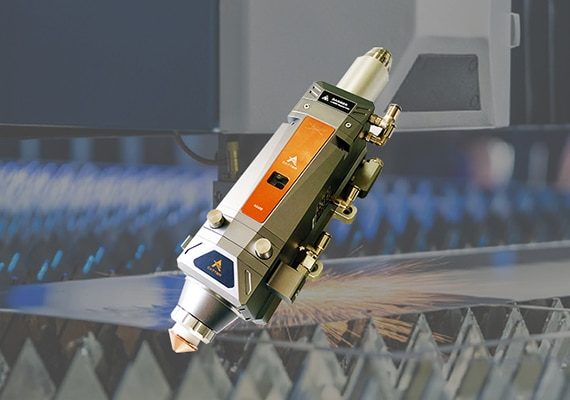
The high-quality laser cutting head delivers precision and efficiency, featuring advanced optics for superior beam focus and accuracy. Designed for durability and versatility, it ensures clean cuts on various materials, minimizing waste. With user-friendly adjustments and high-speed performance, it’s the perfect component for professional-grade laser cutting applications.
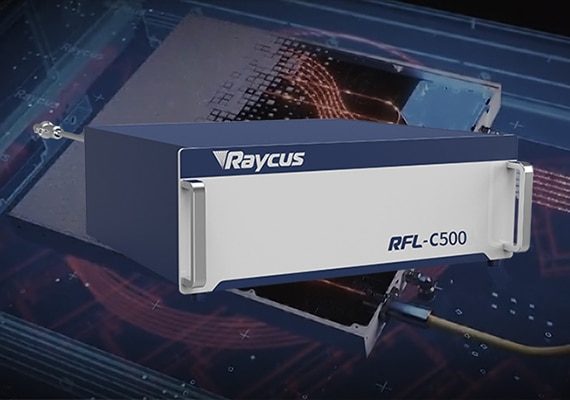
The ultra-stable laser generator is the heart of cutting-edge performance, delivering consistent power output for flawless cutting and engraving. Engineered for reliability, it ensures precision even during extended operations. Its advanced design minimizes fluctuations, enhances efficiency, and maximizes material compatibility, making it essential for professional-grade laser cutting applications.
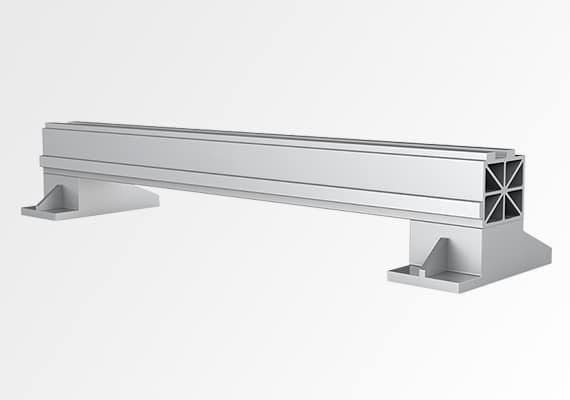
The aviation aluminum beam combines lightweight design with exceptional strength, ensuring stability and precision during high-speed operations. Crafted from aerospace-grade aluminum, it enhances cutting accuracy while resisting deformation. Its corrosion-resistant and durable structure reduces vibration, enabling smooth, efficient performance, making it a cornerstone of advanced laser cutting technology.
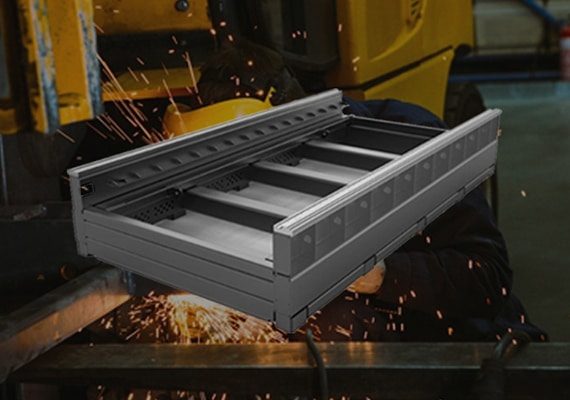
The Sturdy Cutting Bed is built for durability and precision, providing a stable platform for flawless laser cutting. Its robust construction resists wear and deformation, ensuring long-term reliability. Designed to support heavy workloads and various materials, it enhances cutting accuracy and efficiency, making it indispensable for industrial-grade performance.
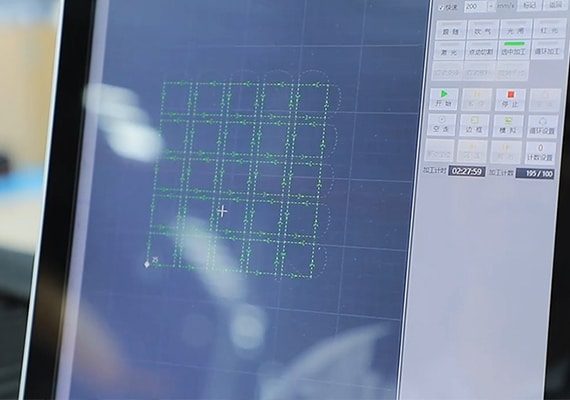
The friendly CNC control system offers intuitive operation with a user-focused interface, simplifying laser cutting processes. Equipped with advanced programming capabilities, it ensures precise control and seamless execution of complex designs. Compatible with various file formats, it boosts productivity while providing an effortless experience for professionals and beginners alike.
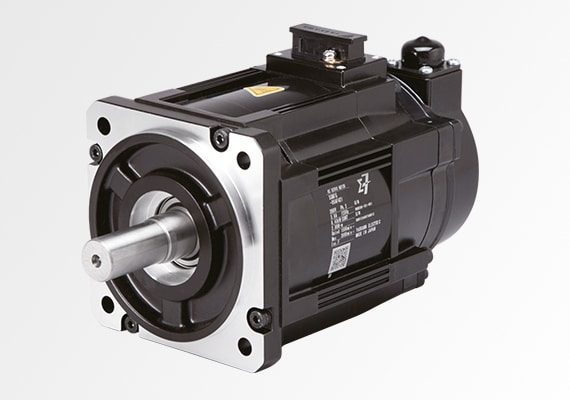
The high-precision servo motor ensures unmatched accuracy and smooth motion control for laser cutting operations. Its advanced design delivers rapid response and stable performance, enabling intricate cuts with exceptional detail. Built for durability and efficiency, it minimizes errors and enhances speed, making it essential for professional-grade cutting precision.
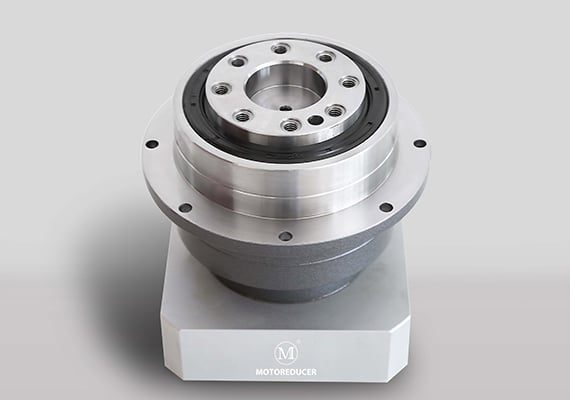
The high-performance reducer optimizes torque transmission for smooth and efficient laser-cutting operations. Engineered for durability, it minimizes vibration and ensures stable performance under high workloads. Its precision design enhances cutting accuracy and extends machine life, making it an indispensable component for achieving consistent, high-quality results.
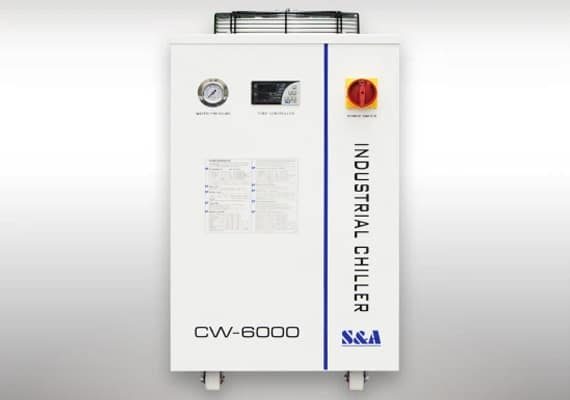
The high-efficiency water chillers provide reliable cooling to maintain optimal laser performance during intensive operations. Designed for energy efficiency, they regulate temperature precisely, preventing overheating and ensuring consistent output. With a durable build and user-friendly controls, these chillers enhance system longevity and productivity, making them essential for peak laser-cutting efficiency.
| Model | AKJ-1325F | AKJ-1530F | AKJ-1545F | AKJ-2040F | AKJ-2560F |
|---|---|---|---|---|---|
| Cutting Range | 1300*2500mm | 1500*3000mm | 1500*4500mm | 2000*4000mm | 2500*6000mm |
| Laser Type | Fiber Laser | ||||
| Laser Power | 1-40KW | ||||
| Laser Generator | Raycus, Max, IPG | ||||
| Control Software | Cypcut, Au3tech | ||||
| Laser Head | Raytools, Au3tech, Boci | ||||
| Servo Motor | Yaskawa, Delta | ||||
| Guide Rail | HIWIN | ||||
| Maximum Moving Speed | 100m/min | ||||
| Maximum Acceleration | 1.0G | ||||
| Positioning Accuracy | ±0.01mm | ||||
| Repeat Positioning Accuracy | ±0.02mm | ||||
Achieves exceptional accuracy with advanced laser technology, delivering clean, intricate cuts on a variety of materials.
Combines powerful laser generators and optimized components to ensure fast, reliable performance for large-scale operations.
Features a sturdy cutting bed, aviation aluminum beam, and robust components designed for long-lasting, industrial-grade use.
Equipped with a friendly CNC control system, simplifying complex processes with intuitive controls and seamless integration.
Capable of cutting a wide range of materials, including metals, plastics, and composites, for diverse applications.
High-efficiency water chillers maintain optimal system performance while minimizing energy consumption.
High-precision servo motors and high-performance reducers ensure smooth, stable motion for flawless results.
Maximizes productivity with minimal material waste and maintenance costs, providing excellent value for businesses of all sizes.
| Laser Power | Thickness (mm) | Cutting Speed (m/min) | Focus Position (mm) | Cutting Height (mm) | Gas | Nozzle (mm) | Pressure (bar) |
|---|---|---|---|---|---|---|---|
| 1000W | 0.8 | 18 | 0 | 1 | N2/Air | 1.5S | 10 |
| 1 | 10 | 0 | 1 | N2/Air | 1.5S | 10 | |
| 2 | 4 | 3 | 0.8 | O2 | 1.2D | 2 | |
| 3 | 3 | 3 | 0.8 | O2 | 1.2D | 0.6 | |
| 4 | 2.3 | 3 | 0.8 | O2 | 1.2D | 0.6 | |
| 5 | 1.8 | 3 | 0.8 | O2 | 1.2D | 0.6 | |
| 6 | 1.5 | 3 | 0.8 | O2 | 1.5D | 0.6 | |
| 8 | 1.1 | 3 | 0.8 | O2 | 1.5D | 0.6 | |
| 10 | 0.8 | 3 | 0.8 | O2 | 2.5D | 0.6 | |
| 1500W | 1 | 20 | 0 | 1 | N2/Air | 1.5S | 10 |
| 2 | 5 | 3 | 0.8 | O2 | 1.2D | 2 | |
| 3 | 3.6 | 3 | 0.8 | O2 | 1.2D | 0.6 | |
| 4 | 2.5 | 3 | 0.8 | O2 | 1.2D | 0.6 | |
| 5 | 1.8 | 3 | 0.8 | O2 | 1.2D | 0.6 | |
| 6 | 1.4 | 3 | 0.8 | O2 | 1.5D | 0.6 | |
| 8 | 1.2 | 3 | 0.8 | O2 | 1.5D | 0.6 | |
| 10 | 1 | 2.5 | 0.8 | O2 | 2.0D | 0.6 | |
| 12 | 0.8 | 2.5 | 0.8 | O2 | 2.5D | 0.6 | |
| 14 | 0.65 | 2.5 | 0.8 | O2 | 3.0D | 0.6 | |
| 16 | 0.5 | 2.5 | 0.8 | O2 | 3.0D | 0.6 | |
| 2000W | 1 | 25 | 0 | 1 | N2/Air | 1.5S | 10 |
| 2 | 9 | -1 | 0.5 | N2/Air | 2.0S | 10 | |
| 2 | 5.2 | 3 | 0.8 | O2 | 1.0D | 0.6 | |
| 3 | 4.2 | 3 | 0.8 | O2 | 1.0D | 0.6 | |
| 4 | 3 | 3 | 0.8 | O2 | 1.0D | 0.6 | |
| 5 | 2.2 | 3 | 0.8 | O2 | 1.2D | 0.6 | |
| 6 | 1.8 | 3 | 0.8 | O2 | 1.2D | 0.6 | |
| 8 | 1.3 | 2.5 | 0.8 | O2 | 2.0D | 0.6 | |
| 10 | 1.1 | 2.5 | 0.8 | O2 | 2.0D | 0.5 | |
| 12 | 0.9 | 2.5 | 0.8 | O2 | 2.5D | 0.5 | |
| 14 | 0.8 | 2.5 | 0.8 | O2 | 3.0D | 0.5 | |
| 16 | 0.7 | 2.5 | 0.8 | O2 | 3.5D | 0.6 | |
| 18 | 0.5 | 3 | 0.8 | O2 | 4.0D | 0.6 | |
| 20 | 0.4 | 3 | 0.8 | O2 | 4.0D | 0.6 | |
| 3000W | 1 | 28-35 | 0 | 1 | N2/Air | 1.5S | 10 |
| 2 | 16-20 | 0 | 0.5 | N2/Air | 2.0S | 10 | |
| 2 | 3.8-4.2 | 3 | 0.8 | O2 | 1.0D | 1.6 | |
| 3 | 3.2-3.6 | 4 | 0.8 | O2 | 1.0D | 0.6 | |
| 4 | 3.0-3.2 | 4 | 0.8 | O2 | 1.0D | 0.6 | |
| 5 | 2.7-3.0 | 4 | 0.8 | O2 | 1.2D | 0.6 | |
| 6 | 2.2-2.5 | 4 | 0.8 | O2 | 1.2D | 0.6 | |
| 8 | 1.8-2.2 | 4 | 0.8 | O2 | 1.2D | 0.6 | |
| 10 | 1.0-1.3 | 4 | 0.8 | O2 | 1.2D | 0.6 | |
| 12 | 0.9-1.0 | 4 | 0.8 | O2 | 3.0D | 0.6 | |
| 14 | 0.8-0.9 | 4 | 0.8 | O2 | 3.0D | 0.6 | |
| 16 | 0.6-0.7 | 4 | 0.8 | O2 | 3.5D | 0.6 | |
| 18 | 0.5-0.6 | 4 | 0.8 | O2 | 4.0D | 0.6 | |
| 20 | 0.4-0.55 | 4 | 0.8 | O2 | 4.0D | 0.6 | |
| 22 | 0.45-0.5 | 4 | 0.8 | O2 | 4.0D | 0.6 | |
| 4000W | 1 | 28-35 | 0 | 1 | N2/Air | 1.5S | 10 |
| 2 | 12-15 | -1 | 0.5 | N2/Air | 2.0S | 10 | |
| 3 | 8.0-12.0 | -1.5 | 0.5 | N2/Air | 2.0S | 10 | |
| 3 | 4.0-4.5 | +3 | 0.8 | O2 | 1.2D | 0.6 | |
| 4 | 3.0-3.5 | +3 | 0.8 | O2 | 1.2D | 0.6 | |
| 5 | 2.5-3.0 | +3 | 0.8 | O2 | 1.2D | 0.6 | |
| 6 | 2.5-2.8 | +3 | 0.8 | O2 | 1.2D | 0.6 | |
| 8 | 2.0-2.3 | +3 | 0.8 | O2 | 1.2D | 0.6 | |
| 10 | 1.8-2.0 | +3 | 0.8 | O2 | 1.2D | 0.6 | |
| 12 | 1.0-1.2 | +2.5 | 0.8 | O2 | 3.0D | 0.5 | |
| 14 | 0.9-1.0 | +2.5 | 0.8 | O2 | 3.5D | 0.5 | |
| 16 | 0.7-0.9 | +2.5 | 0.8 | O2 | 3.5D | 0.5 | |
| 18 | 0.6-0.7 | +2.5 | 0.8 | O2 | 4.0D | 0.5 | |
| 20 | 0.55-0.65 | +3 | 0.8 | O2 | 4.0D | 0.5 | |
| 22 | 0.5-0.6 | +3 | 0.8 | O2 | 4.5D | 0.5 | |
| 25 | 0.5 | +3 | 0.8 | O2 | 5.0D | 0.5 | |
| 6000W | 1 | 35-45 | 0 | 1 | N₂/Air | 1.5S | 12 |
| 2 | 20-25 | -1 | 0.5 | N₂/Air | 2.0S | 12 | |
| 3 | 12-14 | -1.5 | 0.5 | N₂/Air | 2.0S | 14 | |
| 4 | 8.0-10.0 | -2 | 0.5 | N₂/Air | 2.0S | 14 | |
| 5 | 6.0-7.0 | -2.5 | 0.5 | N₂/Air | 3.0S | 16 | |
| 6 | 5.0-6.0 | -3 | 0.5 | N₂/Air | 3.5S | 16 | |
| 3 | 3.5-4.2 | +3 | 0.8 | O2 | 1.2E | 0.6 | |
| 4 | 3.3-3.8 | +3 | 0.8 | O2 | 1.2E | 0.6 | |
| 5 | 3.0-3.6 | +3 | 0.8 | O2 | 1.2E | 0.6 | |
| 6 | 2.7-3.2 | +3 | 0.8 | O2 | 1.2E | 0.6 | |
| 8 | 2.2-2.5 | +3 | 0.8 | O2 | 1.2E | 0.6 | |
| 10 | 2.0-2.3 | +4 | 0.8 | O2 | 1.2E | 0.6 | |
| 12 | 0.9-1.0 | +2.5 | 0.8 | O2 | 3.0D | 0.6 | |
| 12 | 1.9-2.1 | +5 | 0.8 | O2 | 1.2E | 0.6 | |
| 14 | 0.8-0.9 | +2.5 | 0.8 | O2 | 3.5D | 0.6 | |
| 14 | 1.4-1.7 | +5 | 1 | O2 | 1.4E | 0.6 | |
| 16 | 0.8-0.9 | +2.5 | 0.8 | O2 | 4.0D | 0.6 | |
| 16 | 1.2-1.4 | +6 | 1 | O2 | 1.4E | 0.6 | |
| 18 | 0.65-0.75 | +2.5 | 0.8 | O2 | 4.0D | 0.6 | |
| 18 | 0.8 | +12 | 0.3 | O2 | 1.6S | 0.6 | |
| 20 | 0.5-0.6 | +3 | 0.8 | O2 | 4.0D | 0.6 | |
| 20 | 0.6-0.7 | +13 | 0.3 | O2 | 1.6S | 0.6 | |
| 22 | 0.45-0.5 | +3 | 0.8 | O2 | 4.0D | 0.6 | |
| 22 | 0.5-0.6 | +13 | 0.3 | O2 | 1.6S | 0.6 | |
| 25 | 0.5 | +3 | 1 | O2 | 5.0D | 0.5 | |
| 25 | 0.4-0.5 | +14 | 0.3 | O2 | 1.8S | 0.6 | |
| 8000W | 1 | 40-50 | 0 | 1 | N₂/Air | 1.5S | 12 |
| 2 | 25-30 | 0 | 0.5 | N₂/Air | 2.0S | 12 | |
| 3 | 20-25 | -1 | 0.5 | N₂/Air | 2.0S | 13 | |
| 4 | 15-18 | -1.5 | 0.5 | N₂/Air | 2.5S | 13 | |
| 5 | 10-12 | -2 | 0.5 | N₂/Air | 2.5S | 13 | |
| 6 | 8.0-9.0 | -2 | 0.5 | N₂/Air | 2.5S | 13 | |
| 8 | 5.0-5.5 | -3 | 0.5 | N₂/Air | 3.0S | 13 | |
| 8 | 2.3-2.5 | +4 | 0.8 | O2 | 1.2E | 0.6 | |
| 10 | 2.3 | +6 | 0.8 | O2 | 1.2E | 0.6 | |
| 12 | 1.8-2.0 | +7 | 0.8 | O2 | 1.2E | 0.6 | |
| 14 | 1.6-1.8 | +8 | 0.8 | O2 | 1.4E | 0.6 | |
| 16 | 1.4-1.6 | +9 | 0.8 | O2 | 1.4E | 0.6 | |
| 20 | 1.0-1.2 | +9 | 0.8 | O2 | 1.6E | 0.6 | |
| 22 | 0.6-0.65 | +9 | 0.8 | O2 | 1.8E | 0.7 | |
| 25 | 0.3-0.45 | +10 | 0.8 | O2 | 1.8E | 0.7 | |
| 30 | 0.2-0.25 | +11 | 1.2 | O2 | 1.8E | 1.3 | |
| 40 | 0.1-0.15 | +11.5 | 1.2 | O2 | 1.8E | 1.5 | |
| 10KW | 1 | 40-45 | 0 | 1 | N₂/Air | 1.5S | 12 |
| 2 | 30-35 | 0 | 0.5 | N₂/Air | 2.0S | 12 | |
| 3 | 25-30 | 0 | 0.5 | N₂/Air | 2.0S | 13 | |
| 4 | 18-20 | 0 | 0.5 | N₂/Air | 2.5S | 13 | |
| 5 | 13-15 | 0 | 0.5 | N₂/Air | 2.5S | 13 | |
| 6 | 10-12 | 0 | 0.5 | N₂/Air | 2.5S | 13 | |
| 8 | 7.0-8.0 | -1 | 0.5 | N₂/Air | 3.0S | 13 | |
| 10 | 3.5-4.5 | -3 | 0.5 | N₂/Air | 4.0S | 13 | |
| 10 | 2.0-2.3 | +6 | 0.8 | O₂ | 1.2E | 0.6 | |
| 12 | 1.8-2.0 | +7 | 0.8 | O₂ | 1.2E | 0.6 | |
| 14 | 1.6-1.8 | +7 | 0.8 | O₂ | 1.4E | 0.6 | |
| 16 | 1.4-1.6 | +8 | 0.8 | O₂ | 1.4E | 0.6 | |
| 20 | 1.2-1.4 | +8 | 0.8 | O₂ | 1.6E | 0.6 | |
| 22 | 1.0-1.2 | +9 | 0.8 | O₂ | 1.8E | 0.7 | |
| 25 | 0.5-0.65 | +10 | 0.8 | O₂ | 1.8E | 0.7 | |
| 30 | 0.3-0.35 | +11 | 1.2 | O₂ | 1.8E | 1.3 | |
| 40 | 0.2 | +11.5 | 1.2 | O₂ | 1.8E | 1.5 | |
| 12KW | 1 | 50-60 | 0 | 1 | N₂/Air | 1.5S | 12 |
| 2 | 35-40 | 0 | 0.5 | N₂/Air | 2.0S | 12 | |
| 3 | 28-33 | 0 | 0.5 | N₂/Air | 2.0S | 13 | |
| 4 | 20-24 | 0 | 0.5 | N₂/Air | 2.5S | 13 | |
| 5 | 15-18 | 0 | 0.5 | N₂/Air | 2.5S | 13 | |
| 6 | 10-13 | 0 | 0.5 | N₂/Air | 2.5S | 13 | |
| 8 | 7-10 | -1.5 | 0.5 | N₂/Air | 3.0S | 13 | |
| 10 | 6.0-6.5 | -3 | 0.5 | N₂/Air | 4.0S | 13 | |
| 10 | 2.0-2.3 | +6 | 0.8 | O2 (Negative Focal) | 1.2E | 0.6 | |
| 12 | 1.8-2.0 | +7 | 0.8 | O2 (Negative Focal) | 1.2E | 0.6 | |
| 14 | 1.6-1.8 | +7 | 0.8 | O2 (Negative Focal) | 1.4E | 0.6 | |
| 16 | 1.5-1.6 | +8 | 0.8 | O2 (Negative Focal) | 1.4E | 0.6 | |
| 20 | 1.3-1.4 | +8 | 0.8 | O2 (Negative Focal) | 1.6E | 0.6 | |
| 22 | 0.9-1.0 | +9 | 0.8 | O2 (Negative Focal) | 1.8E | 0.7 | |
| 22 | 1.0-1.2 | +11 | 0.5 | O2 (Negative Focal) | 1.4SP | 0.7 | |
| 25 | 0.7-0.9 | +11 | 0.8 | O2 (Negative Focal) | 1.8E | 0.7 | |
| 25 | 0.8-1 | +12 | 0.5 | O2 (Negative Focal) | 1.5SP | 0.7 | |
| 30 | 0.4-0.5 | +11 | 1.2 | O2 (Negative Focal) | 1.8E | 1.3 | |
| 30 | 0.7-0.8 | +12 | 0.5 | O2 (Negative Focal) | 1.5SP | 0.8 | |
| 40 | 0.25-0.3 | +11.5 | 1.2 | O2 (Negative Focal) | 1.8E | 1.5 | |
| 12 | 3.0-3.5 | -10 | 1.5 | O2 (Positive Focal) | 1.6SP | 1 | |
| 14 | 3.0-3.2 | -10 | 1.5 | O2 (Positive Focal) | 1.6SP | 1 | |
| 16 | 2.8-3.0 | -12 | 1.5 | O2 (Positive Focal) | 1.6SP | 1 | |
| 20 | 2.0-2.3 | -12 | 1.5 | O2 (Positive Focal) | 1.6SP | 1.2 | |
| 25 | 1.1-1.3 | -14 | 1.5 | O2 (Positive Focal) | 1.8SP | 1.3 | |
| 30 | 0.9-1.0 | -14 | 1.5 | O2 (Positive Focal) | 1.8SP | 1.4 | |
| 15KW | 1 | 50-60 | 0 | 1 | N₂/Air | 1.5S | 10 |
| 2 | 45-48 | 0 | 0.5 | N₂/Air | 2.0S | 10 | |
| 3 | 30-38 | 0 | 0.5 | N₂/Air | 2.0S | 12 | |
| 4 | 26-29 | 0 | 0.5 | N₂/Air | 2.5S | 12 | |
| 5 | 20-23 | 0 | 0.5 | N₂/Air | 2.5S | 12 | |
| 6 | 17-19 | 0 | 0.5 | N₂/Air | 2.5S | 12 | |
| 8 | 10-12 | -1 | 0.5 | N₂/Air | 3.0S | 12 | |
| 10 | 7.0-8.0 | -1 | 0.5 | N₂/Air | 4.0S | 13 | |
| 12 | 5.0-6.0 | -2 | 0.5 | N₂/Air | 4.0S | 13 | |
| 14 | 4.5-5.5 | -6 | 0.5 | N₂/Air | 4.0S | 13 | |
| 16 | 3.0-3.5 | -8 | 0.5 | N₂/Air | 5.0B | 13 | |
| 10 | 2.0-2.3 | +6 | 0.8 | N₂/Air | 1.2E | 0.6 | |
| 12 | 1.8-2.0 | +7 | 0.8 | N₂/Air | 1.2E | 0.6 | |
| 14 | 1.6-1.8 | +7 | 0.8 | N₂/Air | 1.4E | 0.6 | |
| 16 | 1.5-1.6 | +8 | 0.8 | N₂/Air | 1.4E | 0.6 | |
| 20 | 1.3-1.4 | +8 | 0.8 | O2 (Negative Focal) | 1.6E | 0.6 | |
| 22 | 1.0-1.2 | +9 | 0.8 | O2 (Negative Focal) | 1.8E | 0.7 | |
| 22 | 1.2-1.3 | +11 | 0.5 | O2 (Negative Focal) | 1.4SP | 0.7 | |
| 25 | 0.8-1.0 | +10 | 0.8 | O2 (Negative Focal) | 1.8E | 0.7 | |
| 25 | 1.2-1.3 | +12 | 0.5 | O2 (Negative Focal) | 1.5SP | 0.7 | |
| 30 | 0.6-0.7 | +11 | 1.2 | O2 (Negative Focal) | 1.8E | 0.8 | |
| 30 | 0.75-0.85 | +12 | 0.5 | O2 (Negative Focal) | 1.5SP | 0.8 | |
| 40 | 0.3-0.35 | +11.5 | 1.2 | O2 (Negative Focal) | 1.8E | 1.5 | |
| 50 | 0.2-0.25 | +11.5 | 1.8 | O2 (Negative Focal) | 1.8E | 1.6 | |
| 60 | 0.18-0.2 | +12 | 2 | O2 (Negative Focal) | 1.8E | 1.8 | |
| 12 | 3.2-3.5 | -10 | 1.5 | O2 (Positive Focal) | 1.6SP | 1 | |
| 14 | 3.0-3.2 | -10 | 1.5 | O2 (Positive Focal) | 1.6SP | 1 | |
| 16 | 3.0-3.1 | -12 | 1.5 | O2 (Positive Focal) | 1.6SP | 1 | |
| 20 | 2.5-2.8 | -12 | 1.5 | O2 (Positive Focal) | 1.6SP | 1.2 | |
| 25 | 1.6-1.9 | -14 | 1.5 | O2 (Positive Focal) | 1.8SP | 1.3 | |
| 30 | 1.2-1.3 | -14 | 1.5 | O2 (Positive Focal) | 1.8SP | 1.4 | |
| 35 | 1.0-1.2 | -15 | 1.5 | O2 (Positive Focal) | 2.0SP | 1.4 | |
| 20KW | 5 | 23-28 | 0 | 0.5 | N₂/Air | 3.0S | 8 |
| 6 | 18-20 | -0.5 | 0.5 | N₂/Air | 3.0S | 8 | |
| 8 | 14-16 | -1 | 0.5 | N₂/Air | 3.0S | 8 | |
| 10 | 9.0-12.0 | -1.5 | 0.5 | N₂/Air | 3.5S | 8 | |
| 12 | 8.0-10.0 | -2 | 0.5 | N₂/Air | 3.5S | 8 | |
| 14 | 6.0-8.0 | -3 | 0.5 | N₂/Air | 4.0S | 8 | |
| 16 | 5.0-6.0 | -4 | 0.5 | N₂/Air | 5.0S | 8 | |
| 18 | 3.2-4.0 | -6 | 0.5 | N₂/Air | 6.0S | 10 | |
| 20 | 2.7-3.2 | -8 | 0.5 | N₂/Air | 6.0S | 10 | |
| 10 | 2.0-2.3 | +8 | 0.8 | O2 (Negative Focal) | 1.2E | 0.6 | |
| 12 | 1.8-2.0 | +9 | 0.8 | O2 (Negative Focal) | 1.2E | 0.6 | |
| 14 | 1.6-1.8 | +10 | 0.8 | O2 (Negative Focal) | 1.4E | 0.6 | |
| 16 | 1.5-1.6 | +11 | 0.8 | O2 (Negative Focal) | 1.4E | 0.6 | |
| 20 | 1.3-1.4 | +12 | 0.8 | O2 (Negative Focal) | 1.6E | 0.6 | |
| 22 | 1.2-1.3 | +12.5 | 0.8 | O2 (Negative Focal) | 1.8E | 0.7 | |
| 22 | 1.4-1.5 | +13 | 0.5 | O2 (Negative Focal) | 1.4SP | 0.7 | |
| 25 | 1.2-1.4 | +13 | 0.4 | O2 (Negative Focal) | 1.5SP | 1.0 | |
| 30 | 1.2-1.3 | +13.5 | 0.4 | O2 (Negative Focal) | 1.5SP | 1.2 | |
| 40 | 0.6-0.9 | +14 | 0.4 | O2 (Negative Focal) | 1.6SP | 1.4 | |
| 40 | 0.3-0.6 | +13 | 2 | O2 (Negative Focal) | 1.8E | 1.6 | |
| 50 | 0.2-0.3 | +13 | 2 | O2 (Negative Focal) | 1.8E | 1.6 | |
| 60 | 0.2-0.25 | +13.5 | 2 | O2 (Negative Focal) | 1.8E | 1.6 | |
| 70 | 0.18-0.2 | +13.5 | 2 | O2 (Negative Focal) | 1.8E | 1.7 | |
| 80 | 0.12-0.15 | +14 | 2 | O2 (Negative Focal) | 1.8E | 1.8 | |
| 12 | 3.2-3.5 | -10 | 1.5 | O2 (Positive Focal) | 1.6SP | 1 | |
| 14 | 3.0-3.2 | -10 | 1.5 | O2 (Positive Focal) | 1.6SP | 1 | |
| 16 | 3.0-3.1 | -12 | 1.5 | O2 (Positive Focal) | 1.6SP | 1 | |
| 20 | 2.8-3.0 | -12 | 1.5 | O2 (Positive Focal) | 1.6SP | 1.2 | |
| 25 | 2.4-2.6 | -14 | 1.5 | O2 (Positive Focal) | 1.8SP | 1.3 | |
| 30 | 1.7-1.9 | -14 | 1.5 | O2 (Positive Focal) | 1.8SP | 1.4 | |
| 35 | 1.4-1.6 | -15 | 1.5 | O2 (Positive Focal) | 2.0SP | 1.4 | |
| 40 | 1.0-1.2 | -15 | 1.5 | O2 (Positive Focal) | 2.5S | 1.5 | |
| 45 | 0.8-0.9 | -17 | 1.5 | O2 (Positive Focal) | 2.5S | 1.6 | |
| 30KW | 5 | 24-30 | 0 | 0.5 | N₂/Air | 3.0S | 8 |
| 6 | 25-28 | -0.5 | 0.5 | N₂/Air | 3.0S | 8 | |
| 8 | 18-22 | -1 | 0.5 | N₂/Air | 3.0S | 8 | |
| 10 | 14-17 | -1.5 | 0.5 | N₂/Air | 3.5S | 8 | |
| 12 | 11-13 | -2 | 0.5 | N₂/Air | 3.5S | 8 | |
| 14 | 8.0-10.0 | -3 | 0.5 | N₂/Air | 4.0S | 8 | |
| 16 | 7.5-8.5 | -4 | 0.5 | N₂/Air | 5.0S | 8 | |
| 18 | 5.5-6.5 | -6 | 0.5 | N₂/Air | 6.0S | 10 | |
| 20 | 5.0-5.5 | -8 | 0.5 | N₂/Air | 6.0S | 10 | |
| 25 | 3.0-3.5 | -12 | 0.5 | N₂/Air | 6.0S | 10 | |
| 10 | 2.0-2.3 | +8 | 0.8 | O2 (Negative Focal) | 1.2E | 0.6 | |
| 12 | 1.8-2.0 | +9 | 0.8 | O2 (Negative Focal) | 1.2E | 0.6 | |
| 14 | 1.6-1.8 | +10 | 0.8 | O2 (Negative Focal) | 1.4E | 0.6 | |
| 16 | 1.6-1.8 | +11 | 0.8 | O2 (Negative Focal) | 1.4E | 0.6 | |
| 20 | 1.5-1.6 | +12 | 0.8 | O2 (Negative Focal) | 1.6E | 0.6 | |
| 22 | 1.4-1.5 | +13 | 0.5 | O2 (Negative Focal) | 1.4SP | 0.7 | |
| 25 | 1.2-1.4 | +13 | 0.4 | O2 (Negative Focal) | 1.5SP | 1.0 | |
| 30 | 1.2-1.3 | +13.5 | 0.4 | O2 (Negative Focal) | 1.5SP | 1.2 | |
| 40 | 0.6-0.9 | +14 | 0.4 | O2 (Negative Focal) | 1.6SP | 1.4 | |
| 40 | 0.3-0.6 | +13 | 2 | O2 (Negative Focal) | 1.8E | 1.6 | |
| 50 | 0.3-0.5 | +13 | 2 | O2 (Negative Focal) | 1.8E | 1.6 | |
| 50 | 0.6-0.8 | +14 | 0.4 | O2 (Negative Focal) | 1.8SP | 1.6 | |
| 60 | 0.2-0.25 | +13.5 | 2 | O2 (Negative Focal) | 1.8E | 1.6 | |
| 70 | 0.18-0.2 | +13.5 | 2 | O2 (Negative Focal) | 1.8E | 1.7 | |
| 80 | 0.12-0.15 | +14 | 2 | O2 (Negative Focal) | 1.8E | 1.8 | |
| 12 | 3.2-3.5 | -10 | 1.5 | O2 (Positive Focal) | 1.6SP | 1 | |
| 14 | 3.0-3.2 | -10 | 1.5 | O2 (Positive Focal) | 1.6SP | 1 | |
| 16 | 3.0-3.1 | -12 | 1.5 | O2 (Positive Focal) | 1.6SP | 1 | |
| 20 | 2.8-3.0 | -12 | 1.5 | O2 (Positive Focal) | 1.6SP | 1.2 | |
| 25 | 2.6-2.8 | -14 | 1.5 | O2 (Positive Focal) | 1.8SP | 1.3 | |
| 30 | 2.2-2.6 | -14 | 1.5 | O2 (Positive Focal) | 1.8SP | 1.4 | |
| 35 | 1.4-1.6 | -15 | 1.5 | O2 (Positive Focal) | 2.0SP | 1.4 | |
| 40 | 1.0-1.4 | -15 | 1.5 | O2 (Positive Focal) | 2.5S | 1.5 | |
| 45 | 0.8-0.9 | -17 | 1.5 | O2 (Positive Focal) | 2.5S | 1.6 |
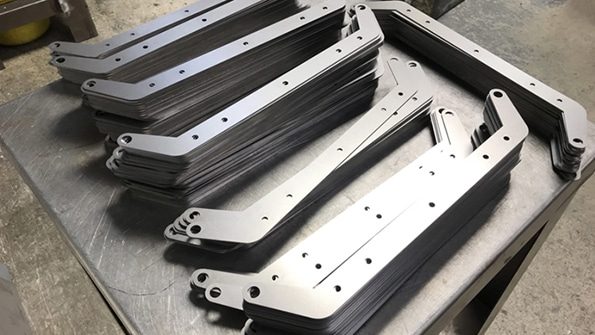
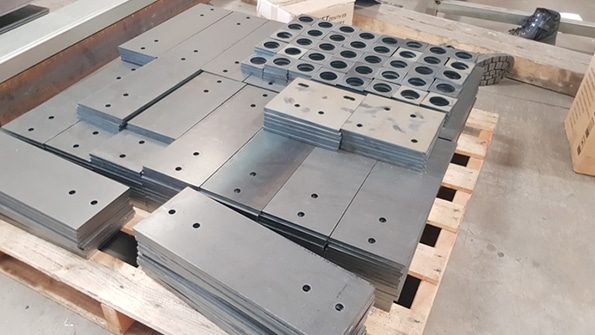
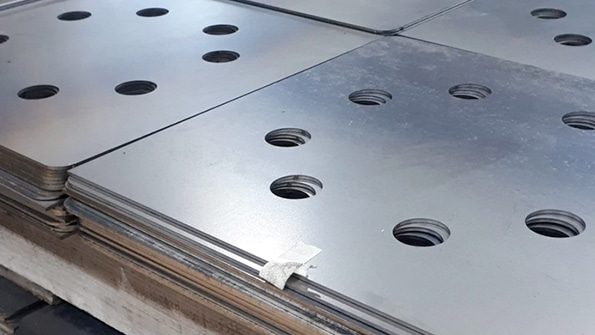
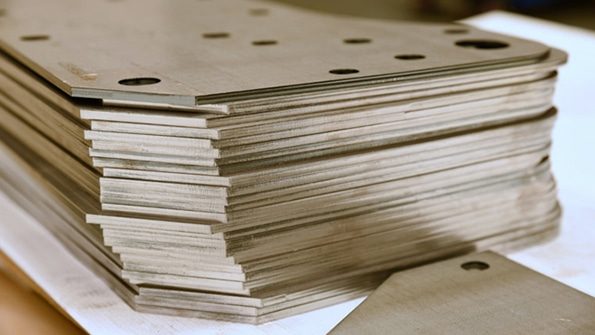
Yes, a laser can cut carbon steel. Laser cutting is one of the most effective methods for cutting carbon steel, especially when precision, clean edges, and minimal material waste are essential. The laser uses focused light to melt or vaporize the steel, allowing it to make precise cuts. Depending on the power of the laser and the thickness of the carbon steel, laser cutting machines can handle a wide range of applications, from thin sheets to thicker plates. Benefits of laser cutting carbon steel include:
Overall, laser cutting is a highly efficient and effective solution for cutting carbon steel in a wide range of industries, including automotive, aerospace, and construction.
Yes, fiber laser generators are commonly used in carbon steel laser cutting machines. Fiber lasers are the preferred choice for cutting carbon steel due to their high power, efficiency, and ability to deliver precise and clean cuts. Here’s a breakdown of why fiber lasers are ideal for this application:
Fiber laser generators are the most efficient and versatile choice for cutting carbon steel, making them the preferred option in modern laser cutting machines. Their high precision, energy efficiency, and ability to cut through a wide range of material thicknesses make them suitable for various industrial applications.
The price of a carbon steel laser cutting machine can vary significantly depending on several factors, including the machine’s size, cutting power, features, and brand. Generally, you can expect prices to fall within the range of $11,500 to $200,000, though some high-end models might go even higher. Here’s a more detailed breakdown:
The price will depend on your specific requirements, such as the material thickness, the volume of cuts, and the level of automation and precision needed for your application.
The speed at which you can laser-cut carbon steel depends on several factors, including laser power, material thickness, cutting quality requirements, and machine settings. Here’s a general overview:
The cutting speed can vary widely, from 10-30 meters per minute for thinner sheets to 1-5 meters per minute for thicker materials. Faster cutting speeds are typically achieved with higher-power lasers and optimized cutting settings. However, the balance between cutting speed and quality must be considered, especially for intricate or high-precision cuts.
Laser cutting is highly accurate and precise, especially when cutting materials like carbon steel. The accuracy of laser cutting for carbon steel typically depends on several factors, but here are some general points regarding its precision:
Laser cutting of carbon steel is one of the most precise methods available, with tolerances typically around ±0.1 mm. It’s capable of producing high-quality cuts with smooth edges and minimal post-processing, especially when the correct equipment and conditions are used.
The maximum thickness for laser cutting carbon steel depends on the power of the laser cutter used. Here’s a breakdown of the maximum thicknesses based on different power ranges:
These values can vary depending on factors such as laser technology, material quality, cutting speed, and assist gas used, but this is the general range for laser cutting carbon steel based on laser power.
When laser cutting carbon steel, several factors can contribute to poor edge quality. Addressing these factors is crucial for achieving clean, precise cuts. Below are the key factors that affect edge quality and potential solutions for each:
Achieving a high-quality edge finish when laser cutting carbon steel depends on controlling various factors, including material thickness, laser power, cutting speed, gas selection, nozzle condition, and machine calibration. By optimizing these factors and performing regular maintenance and monitoring, operators can reduce issues such as rough edges, distortion, and oxidation, leading to cleaner, more precise cuts.
Yes, laser cutting of carbon steel does produce harmful fumes and emissions, mainly due to the interaction between the laser beam, the material being cut, and the assist gases used during the process. These emissions can pose serious health risks if proper safety measures are not in place. The harmful substances produced during the laser cutting of carbon steel include:
Laser-cutting carbon steel does produce harmful fumes and emissions, including metal smoke, particulate matter, VOCs, ozone, and other gases. To protect workers’ health, it is crucial to implement effective fume extraction systems, use appropriate personal protective equipment, ensure proper training and machine maintenance, and optimize cutting parameters to reduce harmful emissions. By taking these measures, it is possible to minimize the health risks associated with laser-cutting operations.
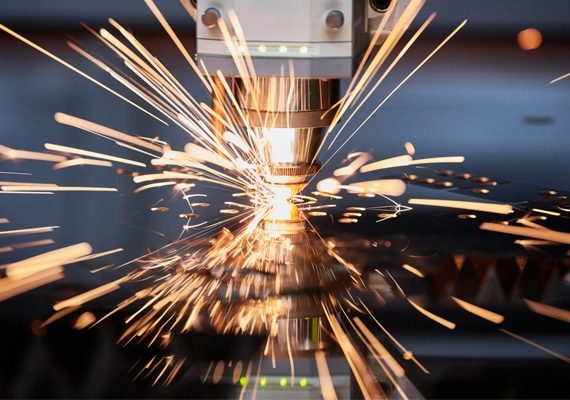
With years of experience in laser cutting technology, we have honed our expertise to provide cutting-edge solutions tailored to your unique needs. Our team of skilled engineers and technicians has the in-depth knowledge to ensure you get the perfect laser-cutting machine for your specific application.
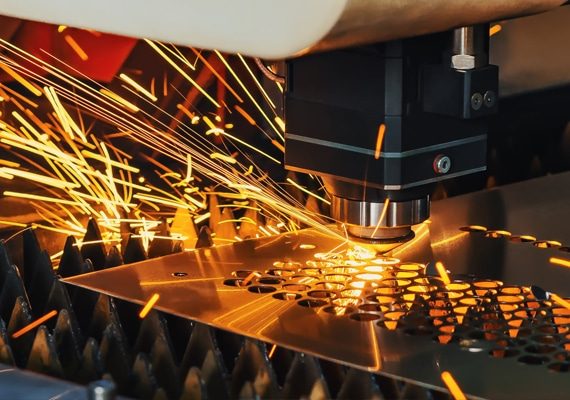
At AccTek Laser, we build strong relationships with our clients. Our dedicated support team provides prompt assistance and after-sales service to keep your laser-cutting machine running at its best for years to come. Your satisfaction is our top priority and we will help you every step of the way.
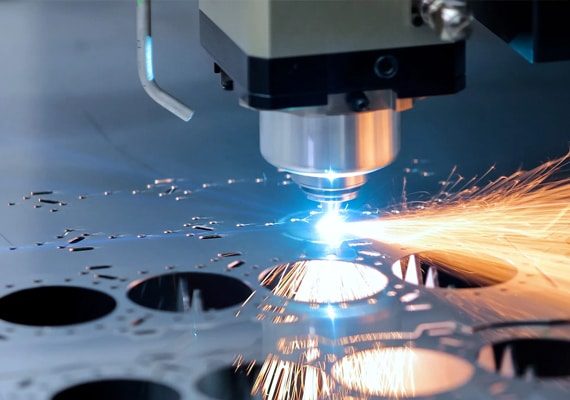
Quality is the cornerstone of our manufacturing process. Every laser-cutting machine is rigorously tested and adheres to strict quality control standards, ensuring that the product you receive meets the highest industry benchmarks. Our dedication to quality ensures you get a machine that performs consistently and delivers perfect cuts every time.
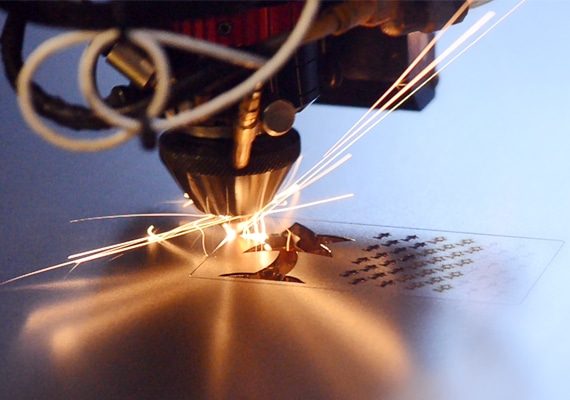
We understand the importance of cost efficiency in today’s competitive landscape. Our laser-cutting machines can provide excellent value for your investment, minimizing downtime and reducing operating costs while maximizing productivity and efficiency.
4 reviews for Carbon Steel Laser Cutting Machine
Santiago –
With impressive cutting capabilities on carbon steel, the laser cutting machine’s accuracy, and consistency make it a valuable asset in our workshop.
Yasmin –
The machine’s robust construction ensures stability during high-speed cutting operations, enhancing productivity.
Martina –
The laser cutting machine’s precision and speed impress, delivering clean and accurate cuts for our fabrication needs.
Mia –
Efficient and reliable, the carbon steel laser cutter handles thick materials effortlessly, ensuring consistent cutting quality.